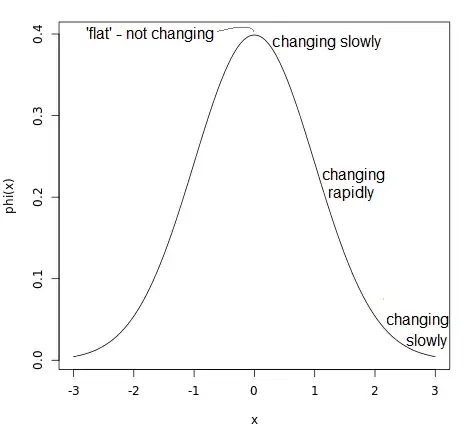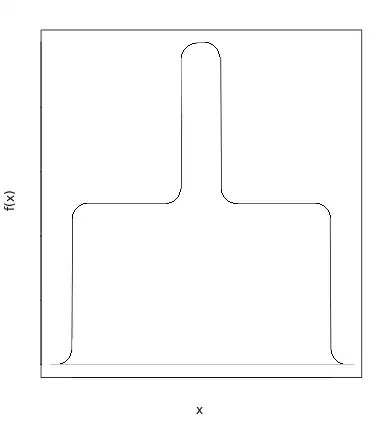For standard normal Z, the change in probability density associated with equally sized changes in z is obviously greater for values of z that are further away from the mean/mode.
For example, if z=0, then $\phi(z)- \phi(z+0.1)\approx 0.002$. However, if z=2, then $\phi(z)-\phi(z+0.1) \approx 0.01$. Thus the density change associated with increasing z by 0.01 is 5 times as large in the latter case.
I have two questions related to this.
Does this property (or a similar property) have a name? (That is, the property where for rv X with PDF f and mean value $\bar{x}$: $\frac{\partial f(x)}{\partial x}<\frac{\partial f(x^o)}{x^o}$ when $\lvert x^o- \bar{x} \rvert >\lvert x- \bar{x} \rvert$.) Does this general idea - that is the extent to which the PDF's derivative changes over the distribution's support - have a name?
Are probability distributions with this property (or a similar property) systematically classified? Can they be identified in some straightforward way? Obviously, all normal distributions have it, but do all unimodal continuous finite distributions?
I am asking because I am working with a finding that is dependent on the above property and I'd like to figure out the best way to succinctly talk about it, and also how to accurately think and report about its generality (or lack thereof).


